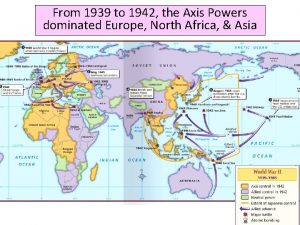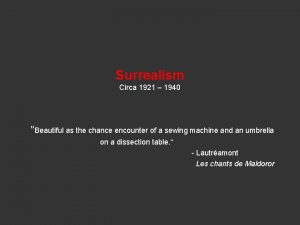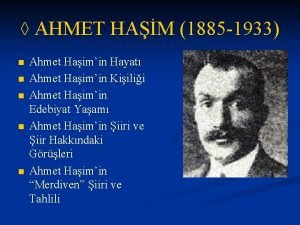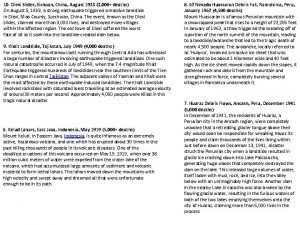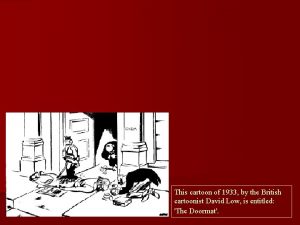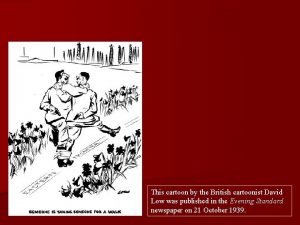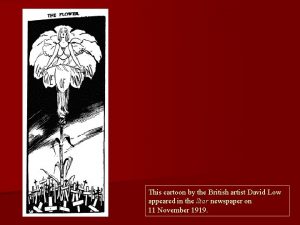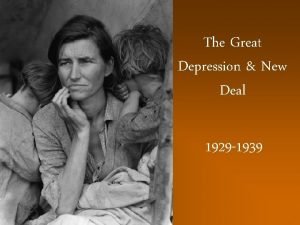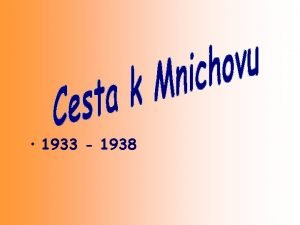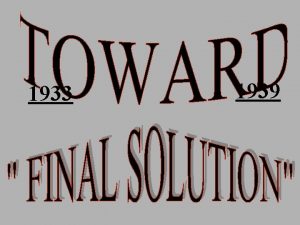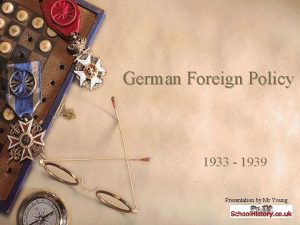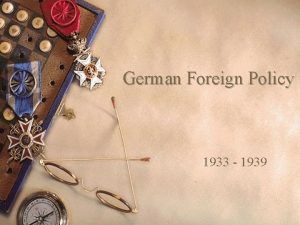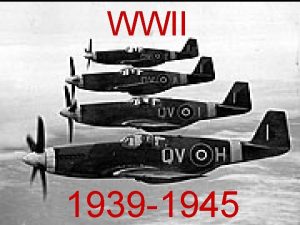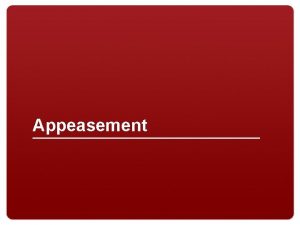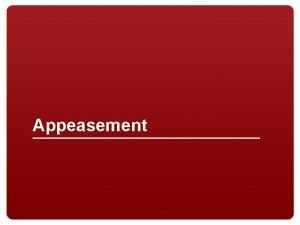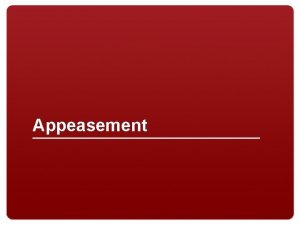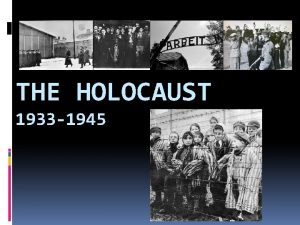German Youth in 1933 1939 Richard L and











- Slides: 11

German Youth in 1933 -1939 Richard L. and Kieran B.

Youth in General at the time • Many of the Youth were happy with the regime as it was very youth orientated. • Hitler Youth and the DMB (German League for Girls) treated young men and women specially, stating they knew more than their parents. • Youth held power as parents feared that they would de denounced by their children. The regime encouraged this • Where there was opposition was highly concentrated in urban working class places such as Cologne.

Reasons for Opposition • Some girls were unhappy with the emphasis on the three C’s (Church, Children, Cooker). • Regime’s control over the youth. • Discontent at the Regime. • Boredom with the Hitler Youth and German League for Girls.

Ways of opposition Swing Groups General non conformity (Increased during the war. ) In Cologne in 1944 they sheltered army deserters and even attacked the Gestapo. • Hanged if caught. • •

White Rose group • The White Rose Group were a group of University Students who set up an anonymous leaflet campaign against the Nazis

• Set up in the war and the only notable political opposition group to the Nazis. • Used passive resistance only. Such as leaflets and painting slogans on houses. • They believed they, the youth, had the power to overthrow Hitler. • However like the Edelweiss Pirates they only really became significant during the war (even in the White Roses case, formed) • Even though they were formed the Scholl’s had already begun to be anti-Nazi long before the war.

Edelweiss Pirates • The Edelweiss Pirates symbol was a flower and this was a symbol of resistance to Hitler. • The flower symbol was a metal badge which was worn on each members collar. • Their was a growing political and ideological bias to the Hitler Youth which diminished the attraction to many youths. • The Edelweiss Pirates was mainly made up of boys ages from 14 – 17 however there were a few girls involved. • Each group was localised and they had their own name. • The membership to the Edelweiss Pirates mainly rooted from the working classes. • The estimated size of the group was at 2, 000 members at 1939. The number of members grew more rapidly during the war. • There were no real aims to the Edelweiss Pirates apart from to escape and disrupt the Nazi system.

• • • Resistance in the Edelweiss Pirates consisted of not conforming to what the Nazi’s believed to what they thought they should be doing, such as the Hitler Youth. The groups would regularly go out, intimidate and beat up members of the Hitler Youth. There were some ‘no-go zones’ for the Hitler Youth. There was some political resistance with the distribution of Communist and Allied leaflets towards the end of the war. To start with, if members of the Edelweiss Pirates were caught they would only be cautioned. However as time went on and as they became more of a problem members started to be arrested and later on they were tried and executed.

• It was during the war that they grew in numbers and activities. • They ignored the travel limitations, hiking in the countryside. • They graffiti parts of the city with anti-Nazi slogans.

Swing and Jazz Groups • • • The Swing groups were mainly made out of youths from the Upper- Middle-Classes who were more affluent. These groups were mainly developed in large cities Their approach was to develop a counter-identity to what the Nazi party wanted. This was expressed through forbidden music The groups met in bars and nightclubs and listened to American Black and Jewish Jazz. The Nazi’s countered this by closing bars and making some arrests.

• They organised regular dances which were massively attended. • Big bands and clubs were set up by the youth, which were closely watched by the Gestapo. • In the words of one who was involved, ‘We were not against the Nazis, they were against us. ’ • There were no political motives for these groups. They simply wanted a good time.
 Low german vs high german
Low german vs high german Power in looking for richard
Power in looking for richard Goodguysww.
Goodguysww. Un chien andalusia
Un chien andalusia Seyreyledim eşkali hayatı şiiri tahlili
Seyreyledim eşkali hayatı şiiri tahlili Diexi slides, sichuan, china, august 1933
Diexi slides, sichuan, china, august 1933 1933 cartoons
1933 cartoons Someone is taking someone for a walk cartoon analysis
Someone is taking someone for a walk cartoon analysis Cartoon by david low 1933
Cartoon by david low 1933 National industrial recovery act of 1933
National industrial recovery act of 1933 Congresso ciam
Congresso ciam Kolmogorov 1933
Kolmogorov 1933


